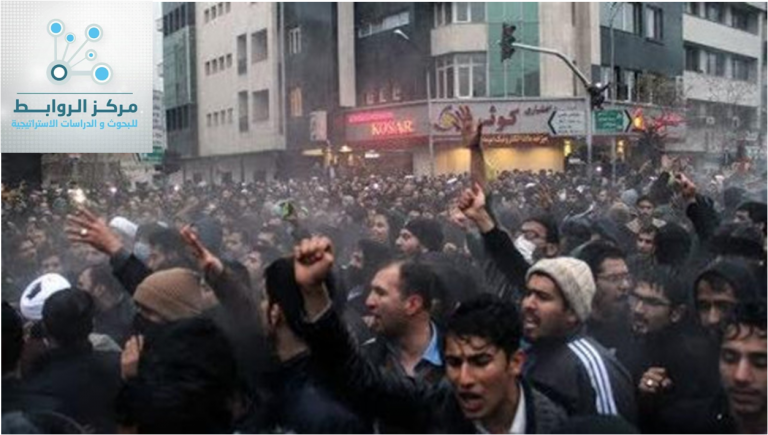Dr.Salim M.Al Zanoon
For the sixth day in a row, demonstrations are taking place in 36 small and medium-sized cities in Iran. The current phenomenon bears clear differences from the experience of the Green Revolution in 2009. The spontaneity is the general character of the demonstrations and does not have political or sectarian leaderships and it is concentrated in the distant cities , and focusing on economic aspects with a political dimension, while the experience of the Green Revolution in 2009 had an organizational structure and a clear leadership represented by Mir Hossein Mousavi and Mehdi Karroubi, and relied on the cities of the center such as Tehran, Shiraz and Persian cities, and the demonstrations were protests against the results of the presidential elections, and the dispute was between two teams ,the reformists and conservatives .
The outbreak of demonstrations in some cities bears an important indication of the nature of the events. The protests started from the city of ” Mashhad “, the second largest city after Tehran that it includes many religious shrines and then its transfer to the city of Qom which is the second city in terms of the religious status of the Shiites that it includes the Hawza ilmiyya , it bears a strong symbolic significance targeting the religious system and not just to demand the fight against the corruption and to improve the economic and living conditions of citizens , and according to the theory of “Dominoes”, the protests began to move to the surrounding cities, and moved to the cities of Isfahan, “Sari, Carmashah and Hamadan”.
However, as measured by the past experience of the Green Revolution and the ability of the system to contain it, as well as the coherence of the institutions of the economic, political and security system, the current protests are not considered a political process capable of radical change of the system, but may create some relative change if they continue, and according to this perspective that the Current phenomenon is facing three possible scenarios.
Scenario I: The failure of protests.
The experience of the past indicates the ability of the Iranian regime to deal with the popular protests and its containment. After the regime succeeded in imposing control and restoring stability, the process of purging, prosecution and legalization is carried out. According to this experiment, the leaders of the Green Movement (Mehdi Karroubi and Mir Hossein Mousavi) of the protests 2009 are still under house arrest.
As a result, the regime may be able to curb the current mass protests, but this option has many repercussions for the post-stabilization period, the most important of which is the revenge of the Revolutionary Guard and the Basij forces from those who are involved in the protests, and this coincided with the expansion of president Rouhani’s power for further openness and reform.
Scenario Two: Pretending of political maturity.
This scenario is based on the regime’s recognition of its economic failure, which was evident in President Ruhani’s speech to absorb the curse of the street in an attempt to restore calm and to commit to false political and economic reforms that would not be accompanied by a real economic and political reform along the lines of the 2009 protests. The situation remains the same.
However, it is unlikely that the regime will recognize its political and economic failure. The regime still has a strong structural and organizational structure, and possesses all the elements of economic and military power as a means of suppressing the masses and imposing stability
Scenario 3: Early Elections.
In the event of an extension of the protests according to the theory of “Dominoes”, and the failure of the system to contain, may resort to the announcement of early elections, as an attempt to calm and maintain the stability of the system, in this context, President Rohani will exit from the political scene, as a failure to employ the partial lifting of sanctions for real economic reforms.
Current protests in Iran will not be able to change the current regime, but it could push for President Ruhani’s powers to be extended to further economic and political reforms, but if the protests continue and expand, it is possible to hold early elections to overthrow Rouhani and change the government landscape.
Rawabet Center for Research and Strategic Studies

